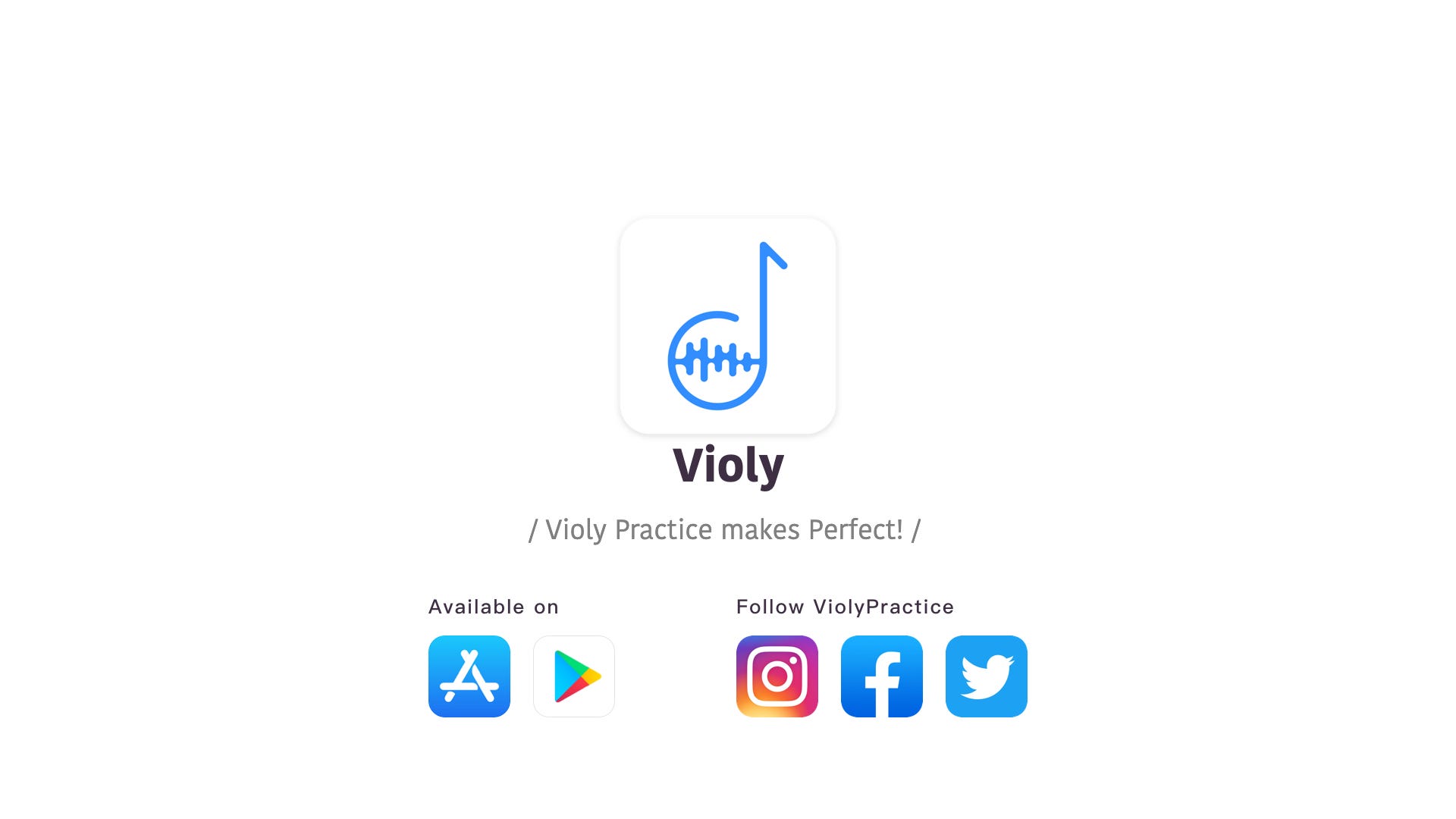Violin Teachers’ Biggest Difficulty: Teaching Violin Students to Read Key Signatures
During violin lessons, many violin teachers find that it is difficult for beginners to read key signatures when playing sheet music on violin app. The process of getting to know what a key signature can tell us may be confused in some way.
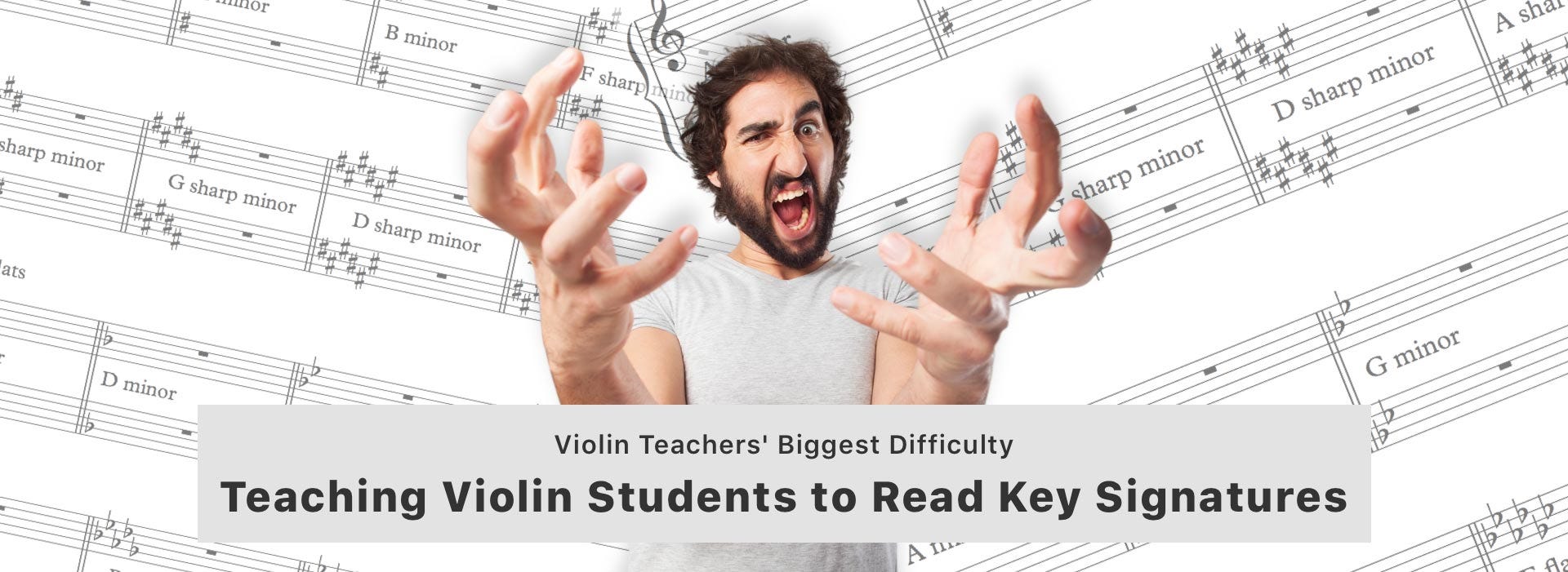
Violy musicians, in this article, we will discuss the secret of reading key signatures and how to recognize them correctly. Also, we will look at the pitfall that you need to avoid.
What does a key signature in violin pieces tell us?
Firstly it tells us the key that a piece is written in, and secondly as a result of this, it tells us how many sharps and flats we should play in a particular piece of music. Let’s have a look at an example here:
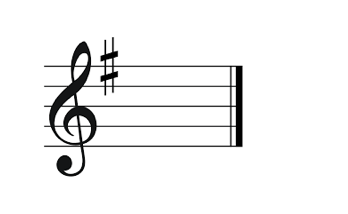
This hash symbol here which is actually a sharp symbol is the key signature and you’ll see it at the beginning of a piece of music and the beginning of each stave. Because this sharp symbol is on the top line there which we know is an F in the treble clef, what that’s saying is that every time we see an F written in this piece of music we should play F-sharp. It’s telling us that it’s in the key of G major.
The same would work if it was in the bass clef. Here we’ve got a sharp again on the F line, so it’s the fourth line up in the bass clef which is an F and that again says whenever you see an F note in this piece of music, you are going to play an F sharp.
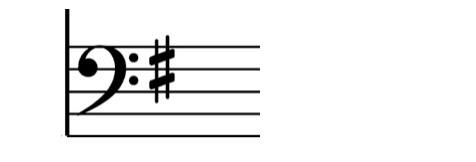
Let’s have a look at some flats.
We’ve got two flats in this particular key signature one is on the middle line and one is on the fourth space up.
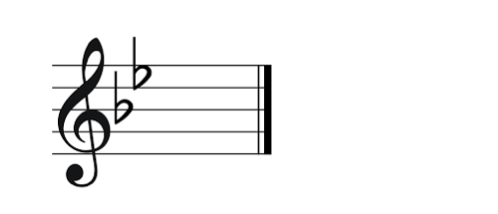
So one is on the B line and one is on the E space. What it tells us is that every time we see a B written in this piece of music, we are going to play a B-flat. Also, every time we see an E written in this piece of music, we are going to play an E flat. It tells us that the key is B flat major.
What is the secret of reading key signatures?
Count up one note from the last sharp of your key signature and you’ll be able to tell straight away what key it’s in. Let’s have a look at our example:
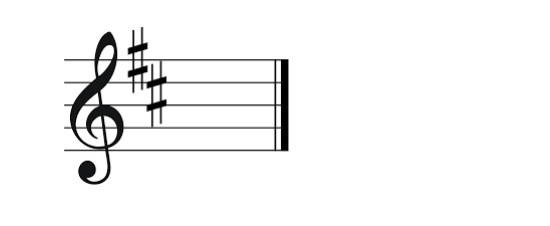
We’ve got two sharps, an F sharp and a C sharp. Let’s count up one note from the last shot C to D, and that tells us that the key signature is D major.
Now let’s have a look at this key signature and utterly terrifying prospect:
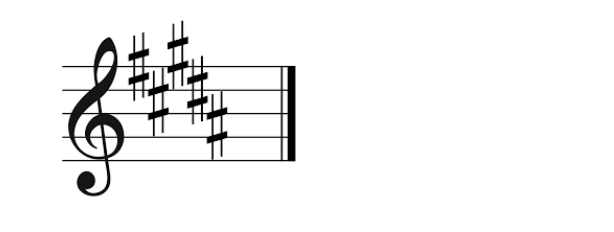
It doesn’t need to be terrifying anymore, because there’s the last sharp. It’s an A. Go up one note, A to B, that tells us that the key signature is B major. It really is as simple as that. You should be able to impress your musical friends with your newfound knowledge that you can read any key signature that has a sharp in it.
There’s a similar rule for the flats: you need to look at the penultimate flat of the key signature. Have a look at this key:

Signature B flat and E flat. Look at the penultimate note, that’s B flat and that tells us the key signature is B flat major. Now let’s have a look at this one:

Look at the penultimate note. It’s A flat major.
With the secret, you are able to tell any key signature in any violin sheet music.
What is the pitfall of reading key signatures using violin app?
The pitfall is: every major key has a relative minor. If there are two keys that share the same key signature, you find the relative minor by counting down three note names.
Here’s our example of G major:

If we count down three note names, G, F, E, and we know that it’s relative minor is E minor.
If we choose B flat major, count down three note names, B, A, G, and it’s relative minor is G minor. So you should be a little bit careful and find out what you are working on is in the major or the minor.

While playing with violin app and violin tuner, how to find out whether it is in the major or the minor?
First, look at the first and last base notes or chord symbols if there are some in the sheet. Most pieces of music start and end on the root chord of the key of the scale.
If you look at the first and last bass note, you’re trying to work out whether it’s G major or a minor. If the first and last base notes are both G’s, it’s probably in G major. If they’re both E’s, it’s highly likely to be an E minor.
Second, check out are there any accidental sharps knocking around on the piece on the seventh note of the minor scale.
Again if you are trying to work out is it in G major or E minor, and you are seeing lots of D sharps knocking around on the piece of music, then you will be thinking that it is probably an E minor, because D is the 7th note of the minor scale.
Finally, let’s think about the key changes. If we have a piece of music that starts in G, we will only play F sharps. But then it moves to D major and suddenly we have to place C sharps as well, we will have to look out for those and also beware of accidentals.
A few things need to be aware of during violin playing and sheet music reading, and one big thing is to remember the secret of how to read key signatures in sharps and flats. This is going to take your musicianship to a new level straight away.
Visit Violy.app for more~
Also, don’t forget to check out Violy sheet music introduction!
Stay tuned, Violy musicians, let’s bring the music fashion of violin back~
Have a HAPPY practice!!
#ViolyPractice makes Perfect!!
Follow us on: Violy.app
Feel free to contact us at Support@Violy.app
